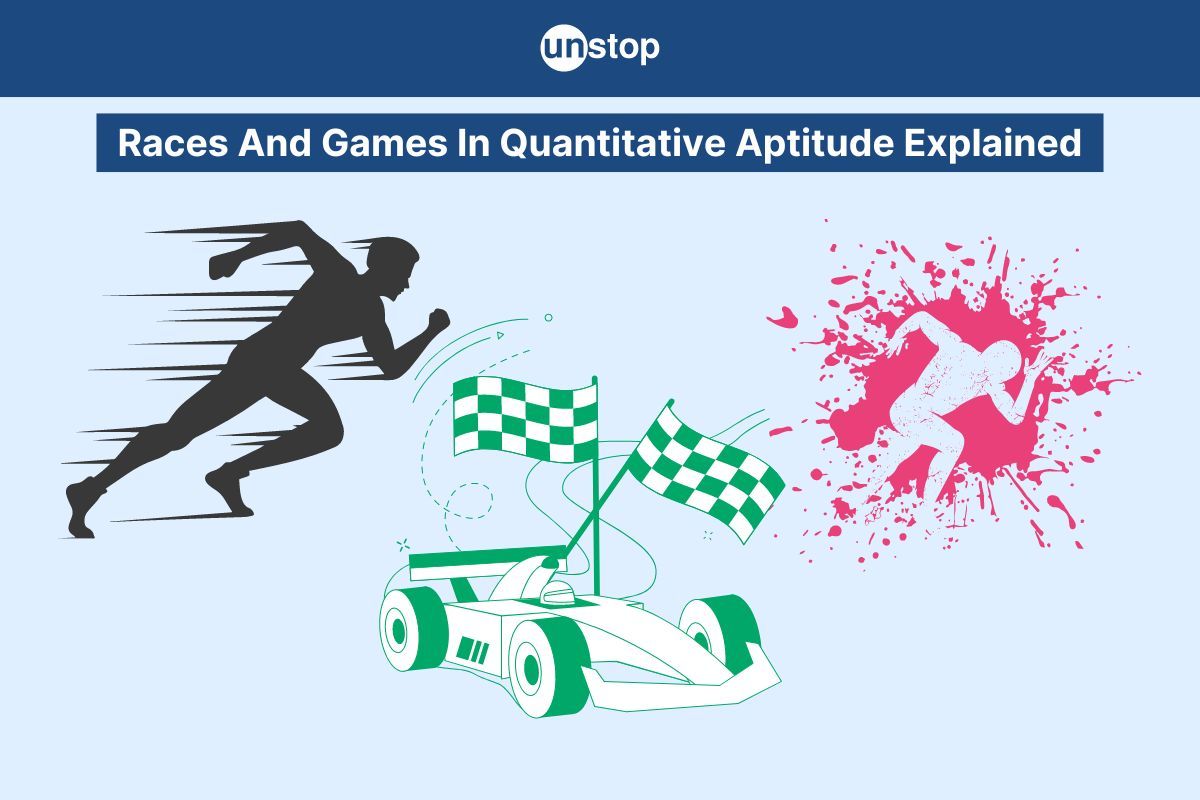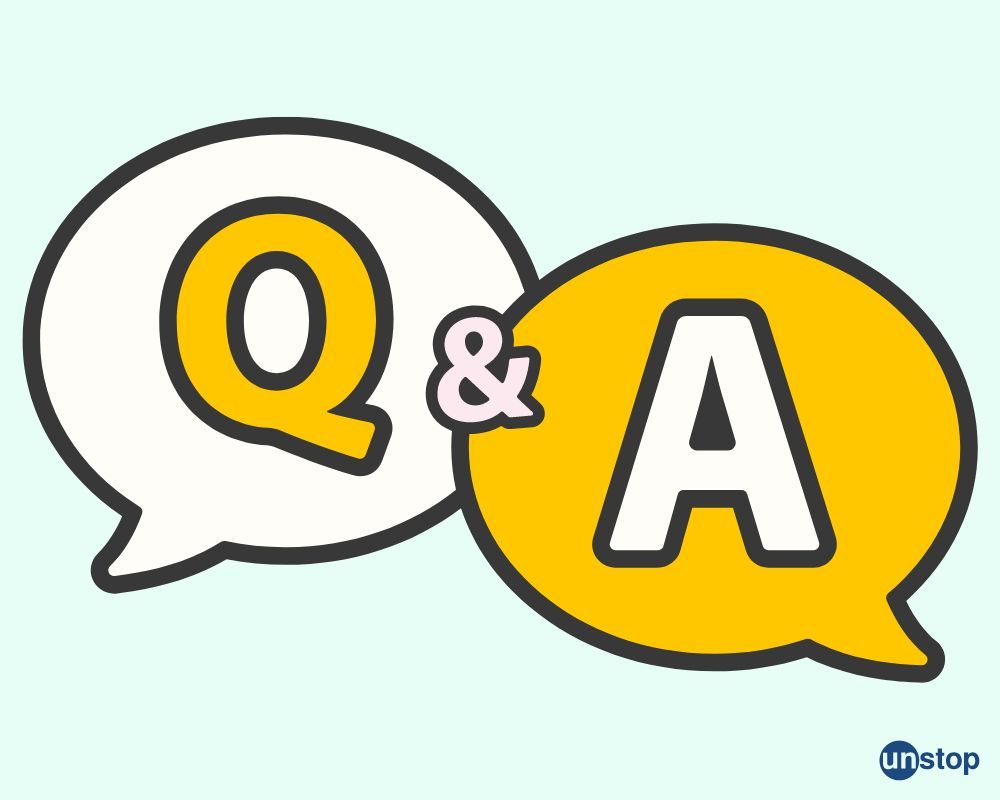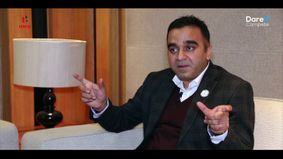- Step 1: The Groundwork
- Step 2: The Three Sections
- Step 3: Practice Makes Improvement
- The Secret Ingredient
- Understanding Basics Of Number Series
- Types Of Number Series Reasoning Questions
- Addition & Multiplication In Number Series
- Square & Cube-Based Number Series Patterns
- Missing Terms & Arranging Sequences
- Tricks & Tips For Solving Number Series
- Selected Number Series Questions With Solutions
- Frequently Asked Questions (FAQs)
- Must Know Terminologies in Blood Relation Questions
- Basic Approaches to Solve Blood Relation Questions
- Types Of Blood Relation Questions
- Tips For Solving Blood Relation Questions
- Multiple Choice Questions (MCQs) with Detailed Explanation
- Conclusion
- Frequently Asked Questions (FAQs)
- Letter Series In Logical Reasoning
- Types Of Letter Series Patterns
- Tips For Solving Letter Series Reasoning
- Best Practice Question Samples With Answers
- Conclusion
- Frequently Asked Questions (FAQs)
- Basics of Problems On Age-Related Questions
- Formula to Solve Problems on Ages-Related Questions
- Types of Age-Related Questions & Examples
- Tips & Tricks for Solving Ages Problems
- Best MCQs on Problems on ages with solved answers
- Conclusion
- Frequently Asked Questions (FAQs)
- Definition of Calendar
- Understanding Days of the Week
- What is a Leap Year?
- Concept of Odd Days in a Century
- Tips For Solving Calendar Reasoning Questions
- Best Calendar Reasoning Questions with Answers (MCQs)
- Frequently Asked Questions (FAQs)
- Basic Concepts of Clock
- Structure of a Clock
- Angle Equilavalence in Clock
- Tips For Solving Clock Questions
- Selected Clock Questions & Answers (MCQs)
- Conclusion
- Frequently Asked Questions (FAQs)
- Understanding The Concept Of Direction Sense
- Tips For Effective Problem-Solving In Direction Sense
- Practical Test Practice Questions And Answers
- Conclusion
- Frequently Asked Questions (FAQs)
- Importance Of Dice Reasoning
- Dice Numbers In Dice Reasoning
- Classification Of Dice
- Constructed Vs Deconstructed Dice
- Tricks & Tips For Solving Dice Problems
- Practice MCQs With Detailed Answers
- Conclusion
- Frequently Asked Questions (FAQs)
- Alphanumeric Series Defined
- Alphanumeric Series In Reasoning Tests
- Tips & Strategies For Solving Alphanumeric Series
- Practice Sample Questions With Detailed Answers
- Conclusion
- Frequently Asked Questions (FAQs)
- Concept Of Mirror Image Reasoning Explained
- Important Terms In Mirror Image Reasoning
- Types Of Mirror Images
- Identifying Correct Mirror Image
- Finding Clock's Mirror Image
- Tips To Solve Mirror Images
- Selected Practice Questions With Answers
- Conclusion
- Frequently Asked Questions (FAQs)
- Concept & Overview Of Input-Output
- Input-Output In Competitive Exams
- Types Of Input-Output Problems
- Strategies, Tips & Tricks For Solving Reasoning Questions
- Selected Practice Questions With Answers
- Conclusion
- Frequently Asked Questions (FAQs)
- Importance Of Finding The Odd One Out
- Tricks And Tips
- How to Find The Odd One Out?
- Solved MCQs with Detailed Explanation
- Conclusion
- Frequently Asked Questions (FAQs)
- Understanding Key Concepts
- Exploring Different Ranking Types
- Formula And Application Of Order And Ranking
- Tips For Solving Order & Ranking
- Selected Practice Questions And Answers
- Conclusion
- Frequently Asked Questions (FAQs)
- Importance Of Pipes & Cistern Aptitude
- Key Terminologies used in Pipes and Cisterns
- Pipes and Cisterns Formula with Examples
- Pipes and Cisterns Shortcut Tricks
- Tips For Solving Pipes & Cistern Problems
- Selected Questions & Answers For Practice (MCQs)
- Conclusion
- Frequently Asked Questions (FAQs)
- Key Concept in Boats and Streams
- Formulas Of Boats & Streams
- Distance & Time Formula
- Tips For Solving Boats & Streams Questions
- Selected Practice Questions With Answers (MCQs)
- Conclusion
- Frequently Asked Questions (FAQs)
- Concept of Mixture and Alligation
- Types Of Alligation Questions
- Formula for Solving Mixture & Alligation
- Tips For Solving Mixture And Alligation
- Selected Questions With Answers For Practice
- Conclusion
- Frequently Asked Questions (FAQs)
- Concepts and Definitions Related to Time and Work
- Important Time And Work Formulas
- Tricks and Tips to Solve Time & Work Questions
- Time And Work MCQs with Detailed Solution
- Conclusion
- Frequently Asked Questions (FAQs)
- What is Harmonic Progression(HP)?
- Formula to find the nth Term in Harmonic Progression
- Formula to find the Sum of the nth Term in HP
- What is Harmonic Mean?
- Harmonic Progression Solved Best MCQs
- Conclusion
- Frequently Asked Questions (FAQs)
- What is Mensuration in Maths?
- What are 2D figures in Mensuration?
- What are 3D figures in Mensuartion?
- Basic Terminologies In Mensuration
- Basic 2D Formulas in Mensuration
- Basic 3D Formulas in Mensuration
- 2D vs 3D in Mensuration
- Solved Questions With Solutions (MCQs)
- Conclusion
- Frequently Asked Questions (FAQs)
- Relationship Between Time, Speed And Distance
- Conversion Units Time, Speed And Distance
- Average & Relative Speed: Two Trains Moving in the same or opposite direction
- Solved MCQs on Time, Speed And Distance
- Conclusion
- Frequently Asked Questions (FAQs)
- What is Simplification in Maths?
- BODMAS Rule in Simplification Explained
- Simplification & Approximation Relation
- Key Terms in Simplification
- Examples Of Simplification Techniques
- Simplification Questions With Solved Answers (MCQs)
- Conclusion
- Frequently Asked Questions (FAQs)
- Height And Distance Important Terms
- Right Angled Triangle In Trigonometry
- Trigonometric Ratios
- Solved Examples For Better Understanding
- Height And Distance Applications In Trigonometry
- Height And Distance Practice Questions & Answers
- Conclusion
- Frequently Asked Questions (FAQs)
- Defining Interest Types
- Simple Interest Vs. Compound Interest
- Selected Solved Questions & Answers
- Conclusion
- Frequently Asked Questions (FAQs)
- Basic Concepts Of Profit And Loss
- Determining Selling Price
- Calculating Discounts
- Formulas For Calculating Profit And Loss
- Examples Of Profit And Loss
- Profit & Loss Questions With Detailed Solution
- Conclusion
- Frequently Asked Questions (FAQs)
- Defining Angle Of Elevation
- Key Terms Used In Angle Of Elevation
- Angle of Elevation Formula with Example
- Angle of Elevation vs. Angle of Depression
- Angle of Elevation MCQs with Answers
- Conclusion
- Frequently Asked Questions (FAQs)
- Defining HCF And LCM
- Calculation Methods Of HCF And LCM
- HCF By Prime Factorization Method
- LCM By Prime Factorization Method
- Difference Between HCF And LCM
- HCF & LCM Practice Questions With Answers
- Conclusion
- Frequently Asked Questions (FAQs)
- What is fraction and decimal?
- Understanding Decimal Fraction
- Place Value in Decimal Fraction
- Mathematical Operations with Decimal Fraction
- Practice with Solved Examples
- Summary
- Frequently Asked Questions
- All About Decimals
- All About Fractions
- How to Convert a Decimal into Fraction
- Simple vs Recurring Decimals
- Converting Recurring Decimals to Fractions
- Conversion Charts
- Practice Questions (With Solutions)
- Closing Thoughts
- Frequently Asked Questions
- What is Arithmetic Mean?
- Arithmetic Mean Formula- Ungroup Data & Group Data
- Merits of Arithmetic Mean
- Demerits of Arithmetic Mean
- Alternatives to Arithmetic Mean
- What is the Weighted Arithmetic Mean?
- Arithmetic vs. Geometric Mean
- Arithmetic Mean Application in Statistical Analysis
- Arithmetic Mean Practice Questions with Explanation
- Frequently Asked Questions
- What is Geometric Progression?
- Key Properties of Geometric Progression
- General Form Of Geometric Progression
- General Term or the Nth Term of Geometric Progression
- The sum of nth Terms of GP
- Types Of Geometric Progression
- Solved Questions and Answers of GP
- Conclusion
- Frequently Asked Questions (FAQs)
- Average in Maths
- Average Formula in Maths
- Differentiating Types of Average
- How to Calculate Average of Negative Numbers?
- Practical Applications of Averages
- Average Questions For Practice
- Frequently Asked Questions
- What is Simple Interest in Maths?
- Simple Interest Formula Explained
- Simple Interest Formula for Years, Months & Days
- Simple Interest Examples & Practice Questions
- Conclusion
- Frequently Asked Questions (FAQs)
- Defining Mathematical Ratios
- Understanding Proportions Fundamentals
- Differentiating Ratios from Proportions
- Ratio and Proportion Formulas
- Properties of Ratio and Proportion
- How to Solve Ratio and Proportion Problems
- Ratio and Proportion Problems (With Solutions)
- Summary
- Frequently Asked Questions
- What is Number in Maths?
- Types of Numbers With Example
- Real vs Complex Numbers Explored
- Basic Operations on Numbers
- Practice Questions (With Solutions)
- Frequently Asked Questions
- What is Arithmetic Progression (AP) in Maths?
- Important Terminologies in Arithmetic Progression
- Basic Terms in Arithmetic Progression
- General Form Of Arithmetic Progression Series
- Types Of Arithmetic Progression
- Solved Questions With Explanation (MCQs)
- Conclusion
- Frequently Asked Questions (FAQs)
- Understanding Basic Concept
- Importance Of Train Problems In Aptitude
- Tips To Solve Train Problems
- Selected Practice Questions & Answers
- Conclusion
- Frequently Asked Questions (FAQs)
- Definition Of Mode
- Calculating Mode For Ungrouped Data
- Calculating Mode For Grouped Data
- Bimodal, Trimodal & Multimodal Distributions
- Comparing Mean, Median & Mode
- Selected Practice Questions With Answers
- Conclusion
- Frequently Asked Questions (FAQs)
- Important Concept In Races And Games
- Calculating Time, Speed & Distance
- Importance Of Races And Games Problems
- Sample Practice Questions With Answers
- Conclusion
- Frequently Asked Questions (FAQs)
- Types Of Partnership
- Formula For Partnership Questions
- Tips To Solve Partnership Aptitude Questions
- Selected Partnership Questions (Practice MCQs)
- Conclusion
- Frequently Asked Questions (FAQs)
Races And Games- Quantitative Aptitude Practice Question & Answer

Preparing for a test with math questions about races and games? This subject is often seen in quantitative aptitude tests and entrance exams.
It requires important ideas and examples often seen in tests. Knowing the main terms and formulas used in these problems can help you do better on exams.
Important Concept In Races And Games
Let us study some of the important concepts in races and games:
In a race, when A gives B a head start of x meters, it means that both A and B are in the same race, but B gets to begin x meters ahead. As a result, while A has to cover the entire distance from start to finish, B only needs to run the remaining distance after their head start.
In a race, when A beats B by x meters, it indicates that A finishes ahead of B by a distance of x meters.
In a race, A can offer B a head start of “t” minutes. This means that although they both start at different times, they will reach the finish line simultaneously.
In a race scenario, when A is given a head start of x meters over B, it indicates that both A and B kick off the race simultaneously. However, B finishes the race t minutes after A completes it.
A dead heat happens when two or more racers cross the finish line simultaneously, resulting in a tie with no definite winner.
In races and games, a handicap is a way to make things fair by giving some participants a head start or other advantage. This helps to even the playing field, especially when there's a big difference in skill or experience levels among the players.

Calculating Time, Speed & Distance
When calculating time, speed, and distance, it's important to understand the relationship between these variables. Time is the duration it takes to cover a certain distance at a given speed.
Speed is the rate at which an object travels over a specific distance in a set amount of time. Distance is the total length or space between two points.
Formula
Knowing the speed, distance, or time allows you to accurately figure out any of the other variables. This is particularly handy in sports and races, where timing and distance play a key role in deciding results.
Time = Distance/Speed
Speed = Distance/Time
Distance = Speed x Time
Importance Of Races And Games Problems
Let us study the importance of races and games problems:
Enhancing Aptitude
Practicing race problems is crucial for honing quantitative aptitude skills, and fostering quick thinking and mental agility. It enhances logical reasoning, promoting strategic approaches to problem-solving through systematic analysis and critical thinking.
Competitive Exams
In competitive exams, solving race problems showcases an individual's ability to manage time efficiently while maintaining accuracy. Competence in race problems can significantly boost one's performance in various entrance exams.
Sample Practice Questions With Answers

Question 1:Consider a race where A and B start from points 100m and 150m respectively. If A covers 10m in every stride, while B covers 15m, when will B overtake A?
A) B will overtake A at the starting point.
B) B will overtake A after 5 strides.
C) B will overtake A after 10 strides.
D) B will overtake A after 15 strides.
Answer: C) B will overtake A after 10 strides.
Explanation: To find out when B will catch up to A, we calculate how many steps each runner needs to cover the gap. B starts 50m ahead of A. A takes 10m steps while B takes 15m steps, closing the gap by 5m with each step. So, B will need 10 steps to cover the initial 50m gap.
Question 2: In a 200-meter race, runner A starts from the starting line while runner B starts from a point 20 meters behind the starting line. If runner A runs at a constant speed of 8 meters per second and runner B runs at a constant speed of 10 meters per second, when will runner B overtake runner A?
A) B will overtake A immediately after the start.
B) B will overtake A after 2 seconds.
C) B will overtake A after 4 seconds.
D) B will overtake A after 10 seconds.
Answer: D) B will overtake A after 10 seconds.
Explanation: Runner B starts 20 meters behind Runner A. Runner A runs at 8 meters per second, and Runner B runs at 10 meters per second. So, it will take Runner B 10 seconds to catch up with Runner A for the initial 20-meter gap.
Question 3: In a race of 200 m, A can beat B by 28 m and C by 15 m. If C and B run a race of 350 m, by how many meters will C beat B?
A) 26 m
B) 32 m
C) 38 m
D) 44 m
Answer: B) 32 m
Explanation: In a 200-meter race, C is 18 meters behind B. So, C's speed relative to B is 18/200 meters per meter. In a 350-meter race, C will beat B by 18/200×350=31.5 meters approximately. So, the correct answer is 32 meters.
Question 4: In a 400-meter race, A beats B by 60 meters. If B covers 500 meters in 80 seconds, how long will A take to cover the same distance?
A) 72 seconds
B) 80 seconds
C) 90 seconds
D) 78 seconds
Answer: D) 78 seconds
Explanation: In a 400-meter race, A beats B by 60 meters. B runs 500 meters in 80 seconds. B's speed is 6.25 m/s. A's speed is 0.15 m/s faster than B's. A's speed is 6.4 m/s. To cover 500 meters, A takes around 78 seconds.
Question 5: A and B take part in a 150 m race. A runs at 6 km per hour. A gives B a start of 10 m and still beats him by 10 seconds. What is the speed of B?
A) 4 km/h
B) 5 km/h
C) 6 km/h
D) 7 km/h
Answer: A) 4 km/h
Explanation: A runs at 6 km/h and gives B a 10-meter head start. In a 150 m race, A beats B by 10 seconds. To find B's speed, we calculate that B's speed is 1.6 m/s or 4 km/h.
Question 6: In a 400-meter race, A beats B by 20 seconds. If B covers 500 meters in 100 seconds, how long will A take to cover the same distance?
A) 80 seconds
B) 60 seconds
C) 100 seconds
D) 110 seconds
Answer: B) 60 seconds
Explanation: The question is about a race where A beats B by 20 seconds in a 400-meter race. If B covers 500 meters in 100 seconds, we can calculate B's speed as 5 meters per second. A will take 60 seconds to cover the same 400 meters, considering the 20-second lead over B.
Question 7: In a 300-meter race, A beats B by 15 seconds. If B covers 400 meters in 80 seconds, how long will A take to cover the same distance?
A) 60 seconds
B) 70 seconds
C) 75.86 seconds
D) 86.78 seconds
Answer: D) 86.78 seconds
Explanation: To figure out how long A will take to cover the same distance as B, first find B's speed. B covers 400 meters in 80 seconds, so B's speed is 5 meters per second.
Since A beats B by 15 seconds in a 300-meter race, calculate A's speed. A's speed is 4.615 meters per second. To cover 400 meters, A will take around 86.78 seconds, just a bit more than a minute and a half.
Question 8: A and B are participating in a race. If A covers a distance of 300 meters in 45 seconds and B covers the same distance in 60 seconds, by how many meters does A beat B?
A) 95 meters
B) 89 meters
C) 100 meters
D) 80 meters
Answer: C) 100 meters
Explanation: A finishes 300 meters in 45 seconds, while B takes 60 seconds. The time difference is 15 seconds. A's speed is 6.67 meters per second. In 15 seconds, B covers 100 meters less than A. So, A beats B by running 100 meters farther in the same time.
Question 9: A car travels 240 kilometres in 3 hours. What is its speed in kilometres per hour?
A) 60 km/h
B) 80 km/h
C) 100 km/h
D) 120 km/h
Answer: B) 80 km/h
Explanation: The car's speed is 80 kilometres per hour. This is calculated by dividing the total distance travelled (240 kilometres) by the total time taken (3 hours). Therefore, 240 km / 3 hours = 80 km/h. This means that the car is travelling at a speed of 80 kilometres per hour.
Question 10: If a train travels 300 kilometres in 4 hours, what is its speed in meters per second?
A) 10 m/s
B) 15 m/s
C) 20.83 m/s
D) 25 m/s
Answer: C) 20.83 m/s
Explanation: To find how fast the train is in meters per second, first change the distance from kilometers to meters. Since 1 kilometre is 1000 meters, 300 kilometres is 300,000 meters. Then, calculate the speed by dividing the distance by the time.
The train travelled 300,000 meters in 4 hours, which is 14,400 seconds. So, speed = 300,000 meters ÷ 14,400 seconds ≈ 20.83 meters per second. The train's speed is about 20.83 meters per second.
Conclusion
Understanding the concepts of races and games is important for mastering aptitude questions. By solving sample questions, calculating time, speed, and distance, and accessing more aptitude questions, you can enhance your skills in this area.
Keep practicing and challenging yourself with various race and game problems to sharpen your aptitude skills. Understanding the concepts thoroughly will not only help you in aptitude tests but also in real-life scenarios where time, speed, and distance calculations are essential.
Time For A Short Quiz
Frequently Asked Questions (FAQs)
1. What are some common race terminologies used in aptitude tests?
In aptitude tests, common race terminologies include speed, distance, time, relative speed, and average speed. Understanding these terms is crucial for solving problems related to races and games efficiently.
2. Why is it important to understand race problems in aptitude tests?
Understanding race problems in aptitude tests helps develop problem-solving skills, enhances logical reasoning abilities, and improves time management during exams. Proficiency in this area can significantly boost overall performance.
3. How can one solve sample questions related to races and games effectively?
To solve sample questions on races and games effectively, practice regularly, understand the basic concepts thoroughly, utilize shortcuts where applicable and focus on improving calculation speed. Seek guidance from experienced mentors or online resources for better clarity.
4. What is the significance of calculating time, speed, and distance in race problems?
Calculating time, speed, and distance accurately is essential in solving race problems as it aids in determining the relative speeds of participants, predicting outcomes of races or games, and making informed decisions based on different scenarios presented in the questions.
5. Where can one access aptitude questions specifically focused on races and games?
Aptitude questions centred on races and games can be accessed through various online platforms offering practice tests, mock exams, or dedicated sections focusing on quantitative aptitude.
Suggested reads:
- Set Theory- Definition, Type, Formula, Practice Question & Answer
- What Is Mode- Definition, Formula, Practice Questions & Answers
- Number System In Maths- Types, Conversion, Questions And Answers
- What Is Range- Formula & Calculation Explained (Question & Answer)
- Surds And Indices- Basics, Formulas, Questions And Answers
Instinctively, I fall for nature, music, humor, reading, writing, listening, traveling, observing, learning, unlearning, friendship, exercise, etc., all these from the cradle to the grave- that's ME! It's my irrefutable belief in the uniqueness of all. I'll vehemently defend your right to be your best while I expect the same from you!
Login to continue reading
And access exclusive content, personalized recommendations, and career-boosting opportunities.
Subscribe
to our newsletter
















Comments
Add comment